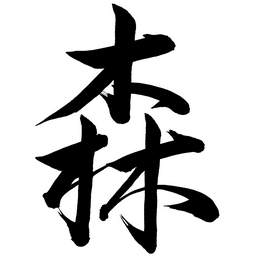| Articles | |
| Yumin Ao & Ulrich Steinvorth | Zhuangzi and Wittgenstein on the Self |
| Thomas E. Smith | Xu Mi’s Network: A Different Perspective on Higher Clarity Daoism |
| Patricia Eichenbaum Karetzky | The Formation of a Daoist Pictorial Iconography in the Tang |
| Shih-Shan Susan Huang | Daoist Seals, Part One: Activation and Fashioning |
| Ekaterina Zavidovskaia | Daoist Ritual Manuals in Vietnam: Activating Stars |
| Forum | |
| John Leonard | Daoist Literary Criticism |
| Esmaeil Radpour | Daoist Visions of the Dream State |
| Wang Xiaoyang & Bao Yan | Ways to Immortality: In Popular and Daoist Tales |
| Steve Jackowicz | Physics, Physicality, and Physiology: The Foundation of Daoist Self-Cultivation |
| Ron Catabia | Daoism and Peace Psychology |
| Livia Kohn | The American Transformation of Daoist Cultivation |
| Wei Yanli | The Caishan Goddess Temple: Then and Now |
Yumin Ao & Ulrich Steinvorth – Zhuangzi and Wittgenstein on the Self
We criticize an approach to culture theory requiring us to start investigations from presuming different conceptions of crucial terms in historical sources such as self, rather than from relying on an uncontroversial sense understood in all civilizations. We argue that we can understand the differences between concepts in different civilizations better by first clarifying the commonalities that are given in the uncontroversial sense. For our claim we use Zhuangzi as an example that shows the advantages of our approach, not least by demonstrating that many of the traditional oppositions between the Chinese and the Western civilization cannot be confirmed. Hence, our approach, though starting from commonalities between civilizations, is strong at uncovering prejudice.
Thomas E. Smith – Xu Mi’s Network: A Different Perspective on Early Higher Clarity Daoism
This paper explores the official and social connections of Xu Mi (303-376), one of the founders of the Shangqing (Higher Clarity) movement in Daoism, with the aim of developing a clearer narrative for what was occurring in his social network in the 360s, around the time that his spirit-medium Yang Xi (330-386) was having his visions. Although certain aspects of these connections have been explored by scholars such as Yoshikawa Tadao (1998) and Kamitsuka Yoshiko (1999), among others, these do not fully explain how a relatively minor official like Xu Mi, together with Yang Xi, could attract a steady stream of high-ranking official visitors seeking advice, medicines, and scriptures, as described in the eighth fascicle of Zhen’gao. This paper examines the life and extensive connections of Xi Mi’s older brother Xu Mai (b. 301), as well as both
Xu Mai and Yang Xi’s connections with Sima Yu (320-372) when the latter was still Prince of Kuaiji before becoming Emperor Jianwen of Jin ( r. 372). It also examines a hitherto overlooked historical record of Xu Mi’s participation in a court debate, which illustrates one way in which Xu Mi was attempting to give support to the Sima family. With this background, the paper then analyzes the list of Xu Mi’s visitors. A recent archaeological discovery also sheds new light on a connection between two of these visitors. This paper concludes that Xu Mi’s visitors were drawn to his home after Yang Xi, during his brief service under Sima Yu, had convinced them of his abilities through a very public demonstration of his spiritual powers. Furthermore, several of these visitors were already putting the new Higher Clarity teachings into practice when they asked for assistance.
Patricia Eichenbaum Karetzky – The Formation of a Daoist Pictorial Iconography in the Tang
Imperial patronage of Daoism in the Tang dynasty led to developments in the teachings and an expansion of the pantheon. These high-level patrons commissioned the construction of a great number of temples and icons creating a demand for art. It was the court artists, not Daoist artists, who were enjoined to create the religious art and the great advances such masters made in the representational arts at court, especially in portraiture, are evident in depictions of the various Daoist gods. They portrayed both their physical appearance and aspects of their divine nature and visually distinguished the growing members of the expanded pantheon by size and placement in the group and by personal attributes. Donor portrayals too appear among the panoply of divinities. These achievements of the Tang artists in the service of Daoist patrons were the basis for later temple art.
Shih-Shan Susan Huang – Daoist Seals, Part One: Activation and Fashioning
The oldest Daoist seals appear in the Eastern Han dynasty, growing in importance and complexity throughout the middle ages. In particular, the so-called Yue Seal had an enduring reputation in Daoist healing and exorcism, its transmission, reproduction, and transformation ranging from the Han to the Tang and Song. The preferred materials for Daoist sealmaking were first stone and metal, and later wood notably wood struck by lightning. Various ritual rules applied to carving, including selecting auspicious dates and properly venerating and placing the seal.
Ekaterina Zavidovskaia – Daoist Ritual Manuals in Vietnam: Activating Stars and Trigrams
This paper examines visual representations—charts, talismans and drawings— in Daoist ritual manuals from the collection of approximately 200 Chinese-language manuscripts originating from the Sino-Vietnamese borderland and, supposedly, belonging to ritual specialists of Zhuang and Yao ethnic minority groups (now stored in private collection in Taiwan), dates on several manuscripts show that these copies were made in the first half of the 20th century in Vietnam, manuscripts served for the needs of living and deceased members of rural community. Visual representations either serve as “instructions” to be followed by officiating priest, or as representations of ritual action per se.
